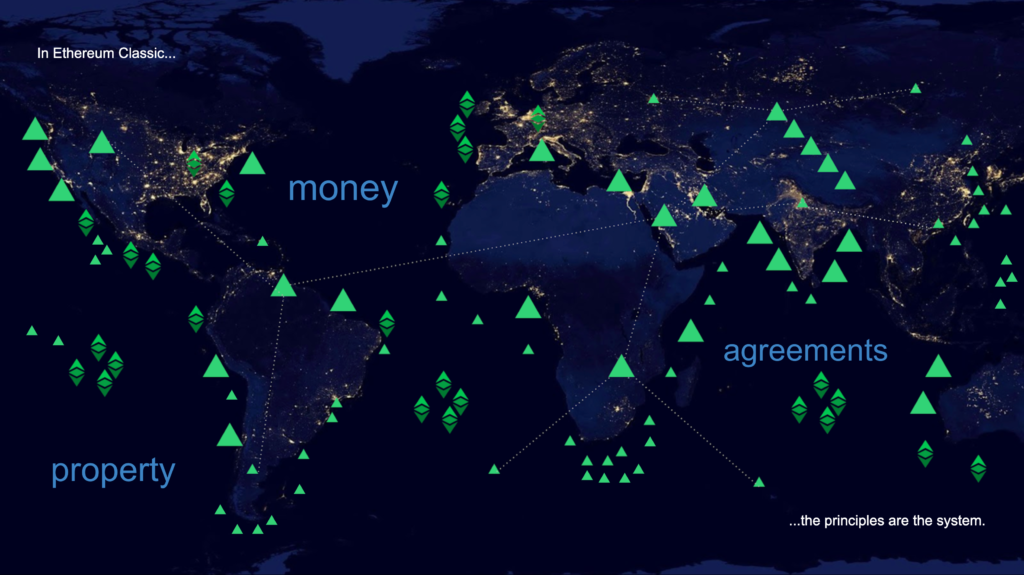You can listen to or watch this article here:
“Principles” may be regarded as evolved patterns of behavior that are persistent in individuals or groups, especially social animals, that resemble a sort of natural law.
For example, territory marking, possession, and defense in animals or even archaic homo like Erectus, may resemble, or may have even eventually evolved into, what we call today “property” which is an artificial legal construct created when groups eventually grew into more stationary villages, and then cities.
Human geographic expansion in the last 3 million years was a function of group growth, consequent conflict (as a push force), and economic opportunity (as a pull force). Brain growth is very tangible evidence of this group growth in that period as a strong evolutionary pressure.
Geographic expansion, depended on group coordination, and some sort of division of labour. These required agreements like “let’s meet here to exchange mates and tools after the next warm season” where a sort of proto-contracts existed, which must have been critical for inter-group coordination, i.e. regional and economic development and expansion. These agreements likely evolved as formal “contracts” eventually.
History informs us that systems that are based on unnatural behavior, such as the elimination of incentives or forcing artificial economic conditions, tend to fail. And, systems that are based on natural behavior, such as money, property, and agreements tend to thrive.
The problem with modern money, property, and agreements is that they largely run on centralized systems, such as financial institutions, tech companies, and other types of industries, controlled by trusted third parties, who inexorably become security holes.
Enter Ethereum Classic

However, in Ethereum Classic (ETC), the principles are encoded in the system. In other words, money, property, and agreements are the peer-to-peer trust minimized network in itself.
1. Money
The native currency of Ethereum Classic is $ETC. It is enabled by public key cryptography where users hold their secret private keys associated to their public accounts; a fully replicated ledger that keeps track of the accounts and balances; and the currency units which can be transferred only by owners through their private keys.
The maximum possible total number of $ETC issued in history will be ~211 million.
In fact, in ETC, the base structure is identical to Bitcoin, therefore, it is a highly secure blockchain with a native currency that is designed to be programmable digital gold.
2. Property
Money is a form of property, but as ETC is programmable, not only the native currency is programmable, but also other forms of property may be formed and managed in the system.
For example decentralized applications with their own native tokens can be developed; future cash flows can be secured, negotiated, and transferred; and real life property, such as vehicles, real estate, and collectables, external to the chain, may be programmed into the network.
3. Agreements
Once money and property are securely encoded into the system, then rules to manage and negotiate those object formats between parties may be added.
Programs that are used for these functions are called smart contracts, which are the key innovation of Ethereum Classic. This means that people and businesses can enter into contracts to buy and sell products, agree on future cash flows, and agree on specific conditions to govern those agreements.
Smart contracts in ETC can also be used to regulate organizational processes, treasuries, and decision making in legal entities or teams.
Global Distribution
The most important part of Ethereum Classic is that, due to trust minimization, it is socially scalable globally, therefore the basic rights hard coded in the system are distributed worldwide, permissionlessly.
Code Is Law